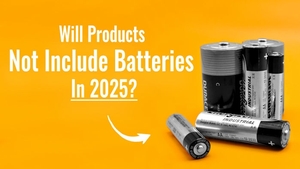Switching to LED fixtures has never been easier, but is it always the right way to go? Read on as we dive into the details!

What’s the Difference Between an LED Retrofit and a New Fixture?
LED Retrofit:
"Retrofitting" means updating your existing fixture with an LED lamp, often using Type A (ballast compatible), Type B (ballast bypass), or Type C (external driver) solutions.
Type A LEDs are plug-and-play, working with the existing ballast—no rewiring needed. Type B bypasses the ballast for direct wiring to power, improving efficiency but requiring more work. Type C uses an external driver instead of the ballast, offering great flexibility and savings, but often needs extra parts and pro help.
Retrofits depend on existing wiring and controls, which often possess lurking issues you're not aware of until you're in the middle of installing.
New Fixture:
Replacing the entire fixture with an integrated LED unit. This is a full upgrade that usually improves efficiency, appearance, and lifespan. New fixtures can be quicker to install and come with more control-ready solutions.
Pros and Cons of LED Retrofits
Retrofitting your existing fixtures with LED lamps comes with appealing benefits, such as lower upfront hardware costs that make it an accessible upgrade for many budgets, faster installation times tailored to specific applications, minimal disruption to your space during the process, and notable energy efficiency gains to help reduce long-term utility bills. That said, it's not without its challenges: you might run into issues with ballast compatibility, a potentially shorter lifespan under certain conditions, dependence on aging wiring and sockets that could harbor problems, restricted access to rebates or incentives, somewhat diminished light quality compared to full replacements, and occasional incompatibility with advanced control systems.
Pros:
- Lower upfront hardware cost
- Faster installation depending on the application
- Minimal disruption to space
- Energy efficient
Cons:
- May require ballast compatibility
- Shorter lifespan in some cases
- Depends on dated wiring and sockets
- Limited rebate eligibility
- Lower level of light quality
- Not always control-friendly
Pros and Cons of New Fixtures
Opting for a full fixture replacement delivers the highest energy savings possible, along with a sleek modern design featuring superior optics for enhanced light distribution, built-in readiness for advanced controls, and the potential for reduced labor costs over time due to streamlined installation and maintenance. On the downside, it demands a complete overhaul of your existing setup, incurs higher recycling fees for disposing of old materials, and comes with steeper upfront hardware expenses that can strain initial budgets.
Pros:
- Highest energy savings
- Modern design and better optics
- Can be controls ready
- Can result in lower labor costs
Cons:
- Requires full replacement
- Results in higher recycling fees
- Higher hardware costs
Cost Comparison in 2025 for a PL retrofit
Type B Retrofit
Average Material Cost: $10-$20
Labor Time: 15 minutes
Est. Lifespan: 25,000 hours
Total Cost (Per Fixture): $30-$50
New Fixture
Average Material Cost: $40-$150
Labor Time: 30 minutes
Est. Lifespan: 70,000 hours
Total Cost (Per Fixture): $60-$200

When to Choose a Retrofit vs. a New Fixture
Choose a Retrofit If:
- Your fixtures are structurally sound
- You're on a budget
- You want quick payback
Choose a New Fixture If:
- Fixtures are outdated or damaged
- You require working controls with dimming
- Fixtures are in a hard-to-reach location
- You need a sure-fire long-term solution
- Rebates favor fixture replacement
What About Utility Rebates?
Rebates vary by utility, but many now favor full fixture upgrades over retrofits.
DLC certification levels impact rebate tiers.
Use a rebate finder tool or work with our team to help maximize savings.
Our Recommendation (Based on 3,000+ Projects)
Most facilities benefit from a hybrid approach — retrofitting office spaces and replacing fixtures in key areas like lobbies, warehouses, and exteriors for long-term value.
FAQ
Q: Do I need an electrician for a Type B retrofit?
Yes. Type B retrofits require bypassing the ballast and must be installed by a qualified professional.
Q: Can I mix retrofits and new fixtures in one building?
Absolutely. Many businesses phase their upgrade over time using both options.
Q: Are new fixtures brighter than retrofits?
They can be. Integrated fixtures often provide more lumens per watt and better directional lighting.
Q: Can I change the color temperature with a retrofit?
Yes, many LED retrofits come with a switch to adjust in the field or later if you change your mind!
Q: Can I make the lights brighter with LED?
Yes! Since you are lowering wattage that's coming from a traditional source, you'll be able to increase the overall light output. Use a wattage selectable retrofit so you can do this in the field as you see fit in your space.
Conclusion
To sum it up, if your fixtures are easy to access, in good condition, and your labor costs are competitive, then retrofitting a fixture is a less expensive solution. On the other hand, if your fixtures are hard to reach (require a lift or business down-time), you want a fresh look, or require added controls or dimmability, consider replacing it with a new luminaire (fixture) for a better investment.
Still unsure which is best for your building? Contact us for a free lighting audit or email a photo of your current fixture — we'll help you decide the smartest path forward.





